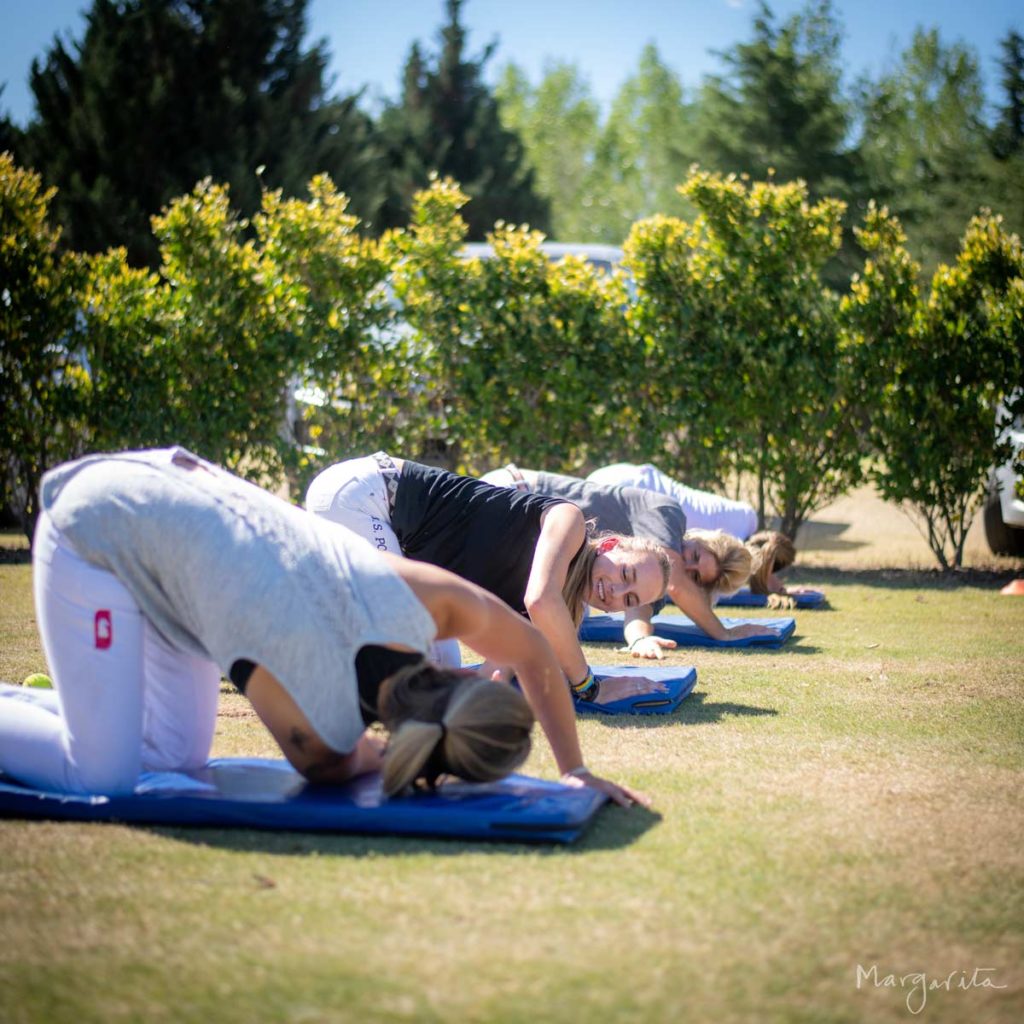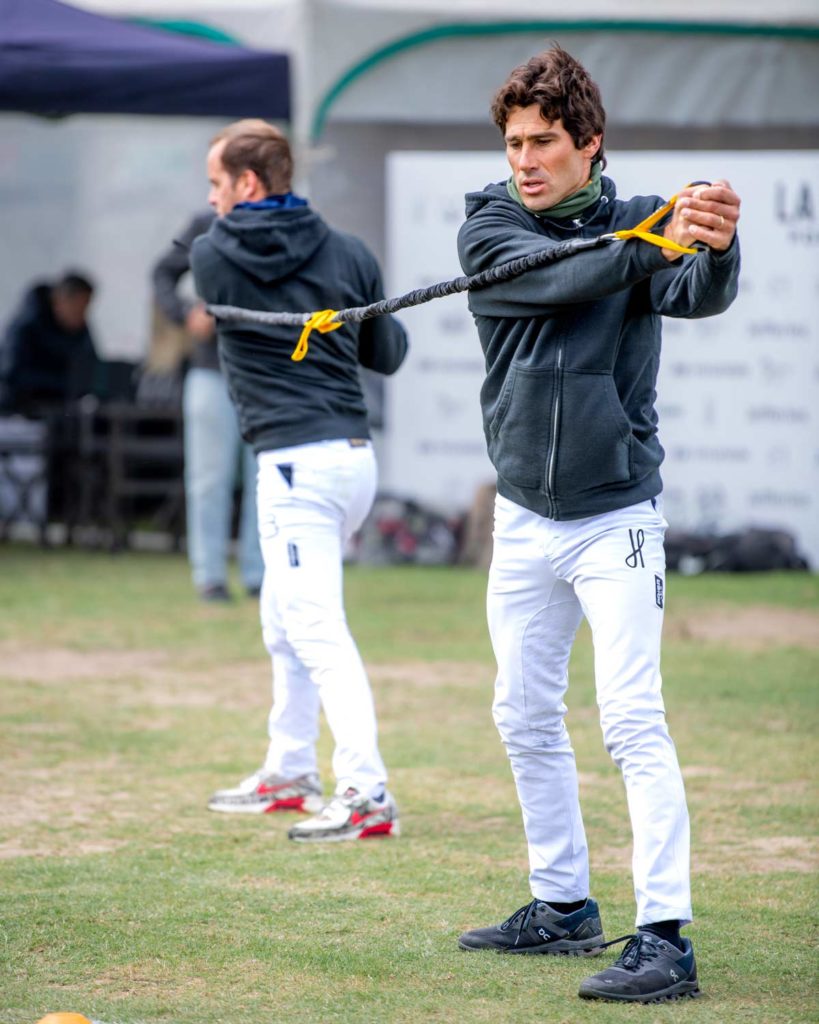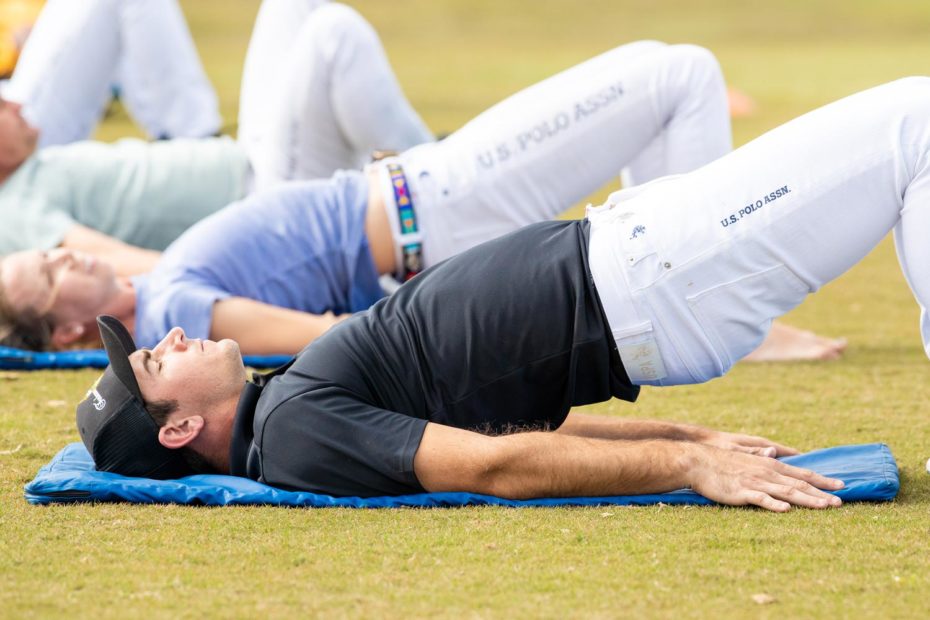Practice Makes Perfect
Similar to other riding disciplines like dressage and Western pleasure, polo also requires riders to have strong foundational riding skills to build from. These skills include the wide range of movements required to maintain control over the horse’s speed and direction like when and how a rider needs to use their legs, reins, and other riding aids.
Unlike other riding disciplines, polo then adds the added challenge of developing all of the skills that come with holding a mallet, swinging a mallet, and developing a good understanding of the many, many rules of the game. On top of this, is the additional challenge of polo only being played right handed. Left handed athletes must learn how to use their right hand to master the mallet skills.
The level of understanding and amount of skill development is one of the first differences that begin to shift what a practice looks like for a novice rider versus a professional.

Second, is the amount of time a rider dedicates to their practice. Whereas a novice player may only ride once or twice a week, professional polo players who have made a career playing the sport are likely to ride four times a week or more depending on when they have matches. However, despite this difference in commitment, some practices are so dependable that they transcend all skill levels. For polo, this practice is known as “Stick n’ Ball”.
Stick n Ball
Stick n’ Ball is a very common practice among all levels of polo players. After a rider has sufficiently warmed up their horse for practice, they then begin hitting the polo ball around a practice field or arena, which is referred to as stick n’ balling. These hits are not usually full strength and mainly serve to help players gain repetitions to improve muscle memory and finesse. All hits in polo are done with the right arm, so the most commonly practiced hits are offside forehands, meaning the ball is hit on the right side of the horse going forward.
However, when Stick n’ Balling, it is important to also incorporate nearside forehands, and backhands on both sides as well. A player’s ability to do all of these shots with ease and consistency is an important distinction between a good player and the best players. But, all players can benefit from the growing appreciation in the polo world for including physical fitness in the practice regime.
Polo Fitness
In the most recent professional polo matches, it is not uncommon to see players warming up with stretches, reflex drills, and other cardio activities to help prepare for the game. However, this was not the case only a few years ago. Recently, more and more coaches are putting a priority on their players’ physical fitness in order to be at their best for a match and to help prevent injury. Horseback riding engages so many muscles in order to maintain balance and control including your quads, core, and calves.

With the addition of the mallet, players also have to develop their grip strength, triceps, and other upper body muscle groups. To build up all of these different muscles to endure an entire match, many professionals train individually outside of riding practice. However, more and more teams are incorporating a warmup and cooldown into their game day routine. These exercises change depending on the needs of the players, but every player can benefit from practicing flexibility and strength in order to avoid injury and improve recovery time between chukkas.
Some of these exercises include holding planks, doing resistance band exercises, and variations of lunges, which are all demonstrated in the series of Chukka Wellness videos on the Global Polo website.
Written in collaboration with Lily Brennan
